“A complete victory gained with great bloodshed”
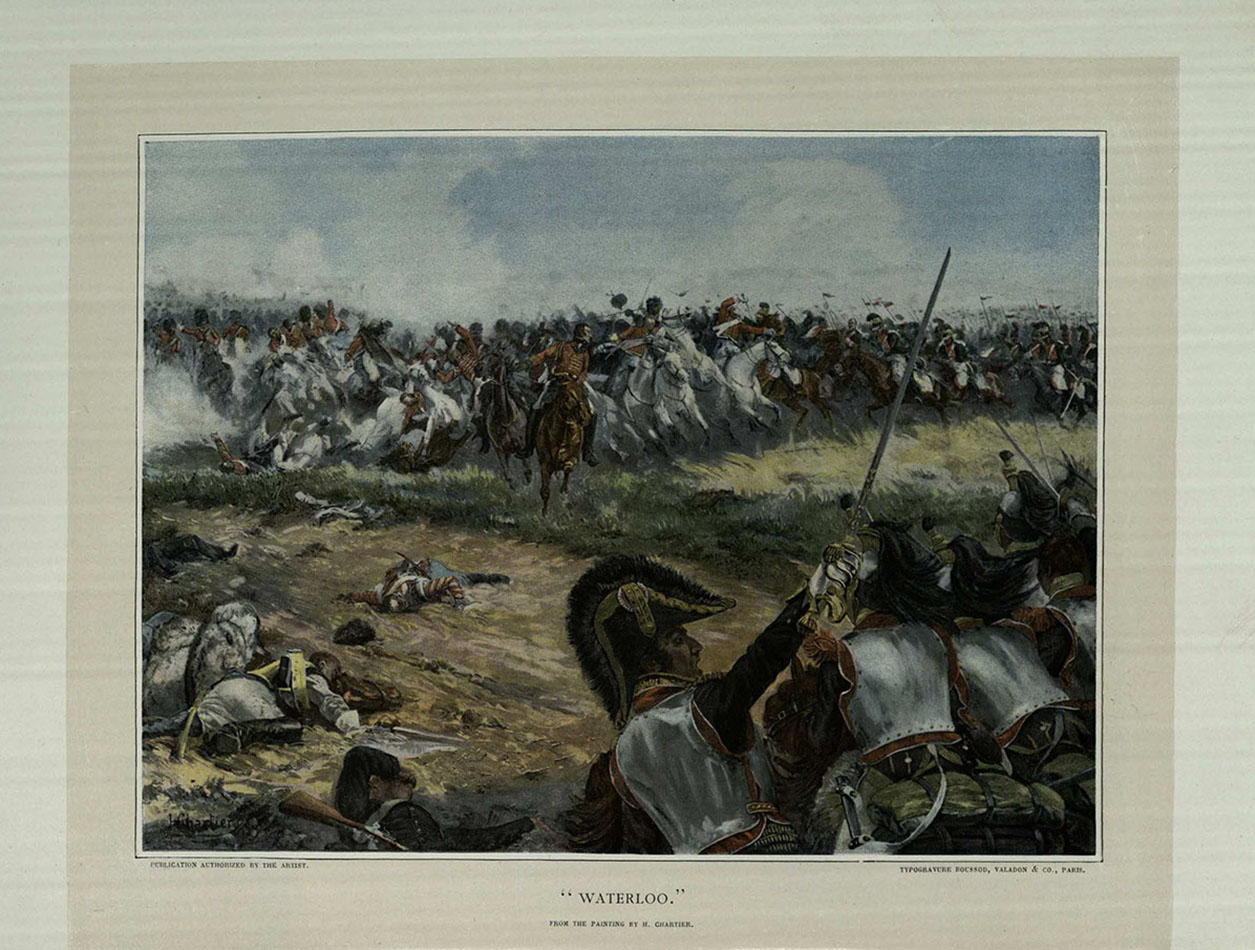
Today is the 200th anniversary of the Battle of Waterloo, when the British under the Duke of Wellington and their allies from the Netherlands, Hanover, Brunswick, and Nassau, joined with the Prussians under Field Marshal Blucher to deliver a decisive defeat to Napoleon which resulted in his exile to St Helena. Thus ended 20 years of war against the French.
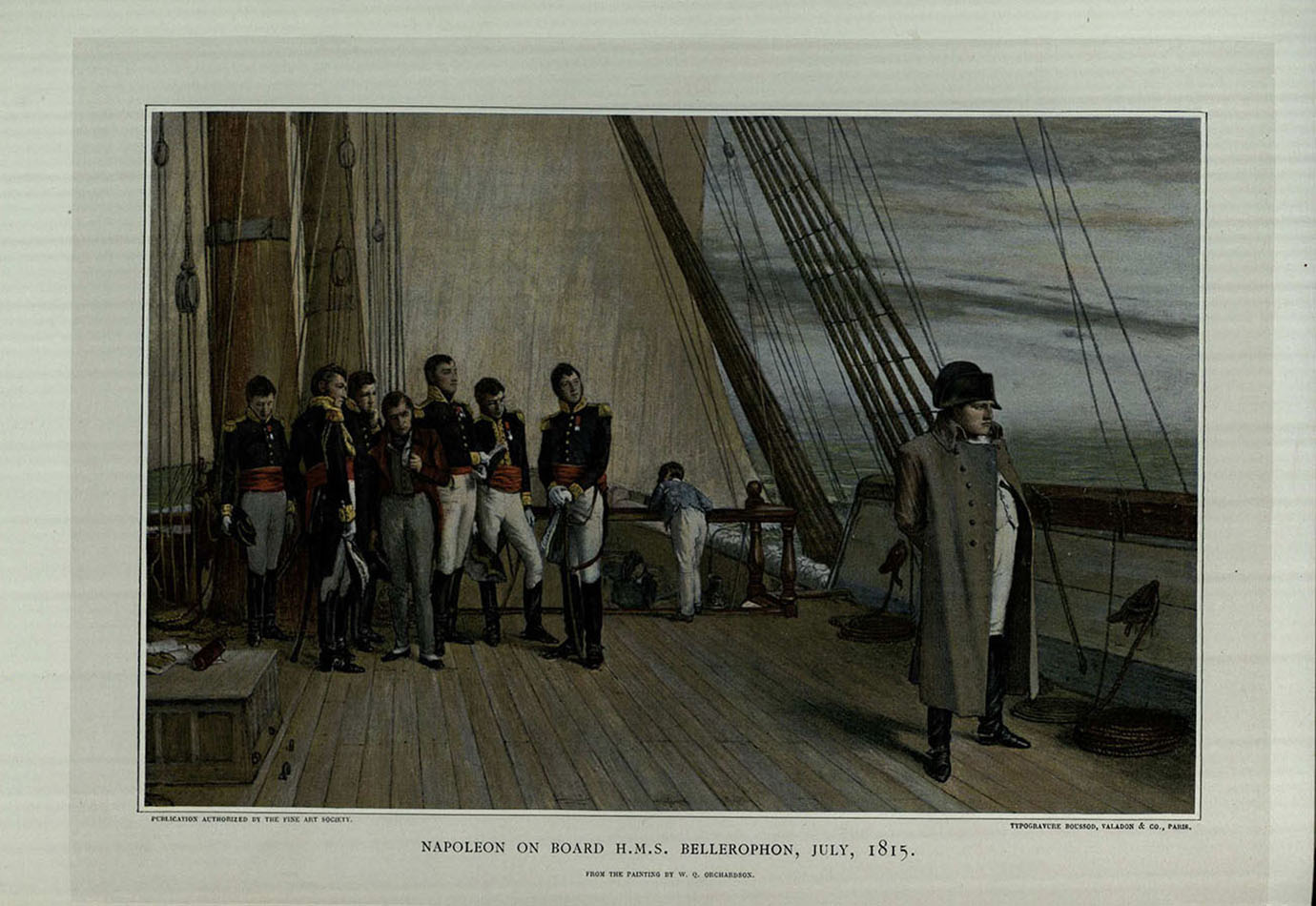
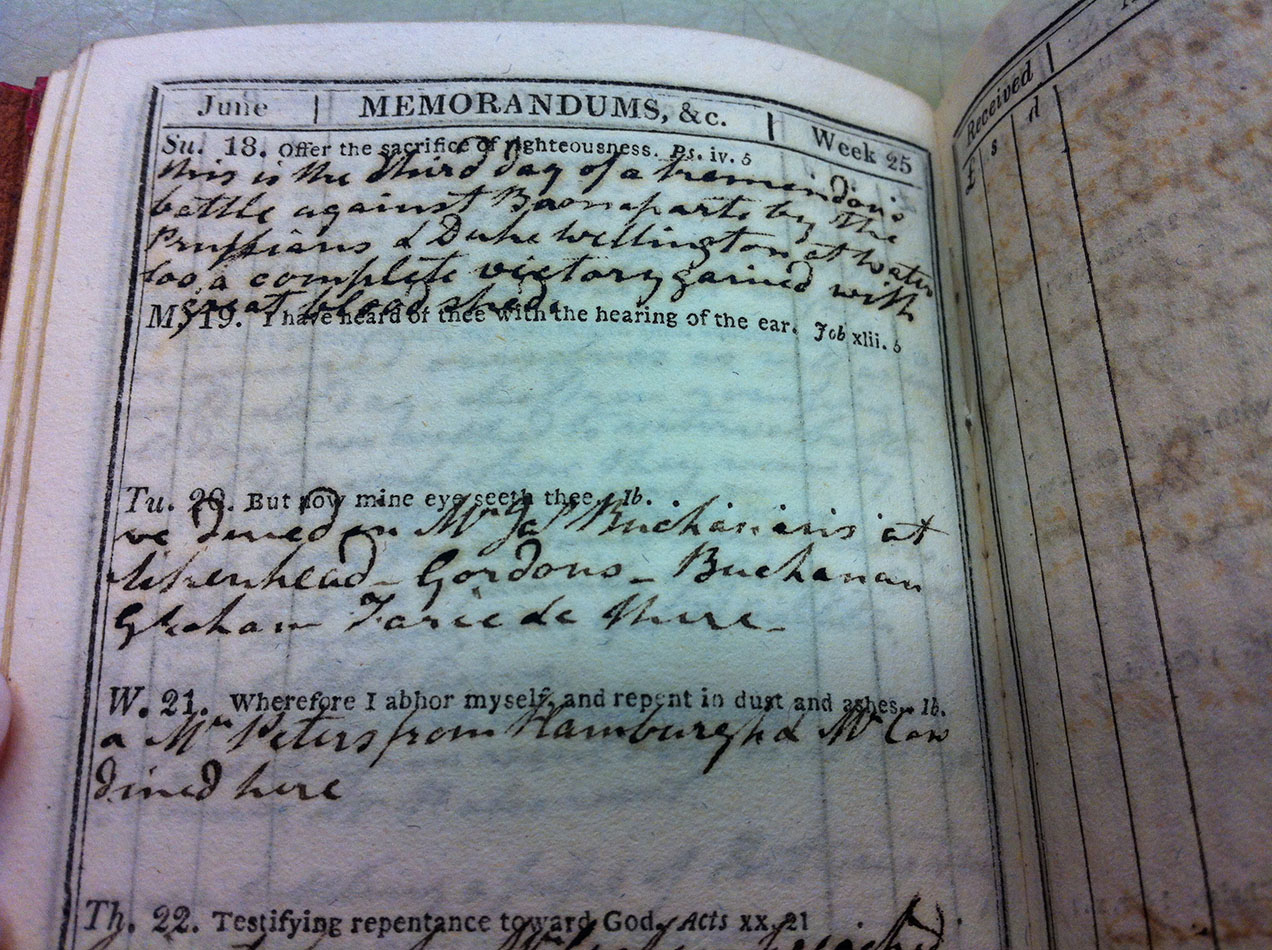
The tiny pocket diary of Mrs Patrick Playfair of Dalmarnock records that the 18 June 1815 was the ‘third day of a tremendous battle. A complete victory gained with great bloodshed’.
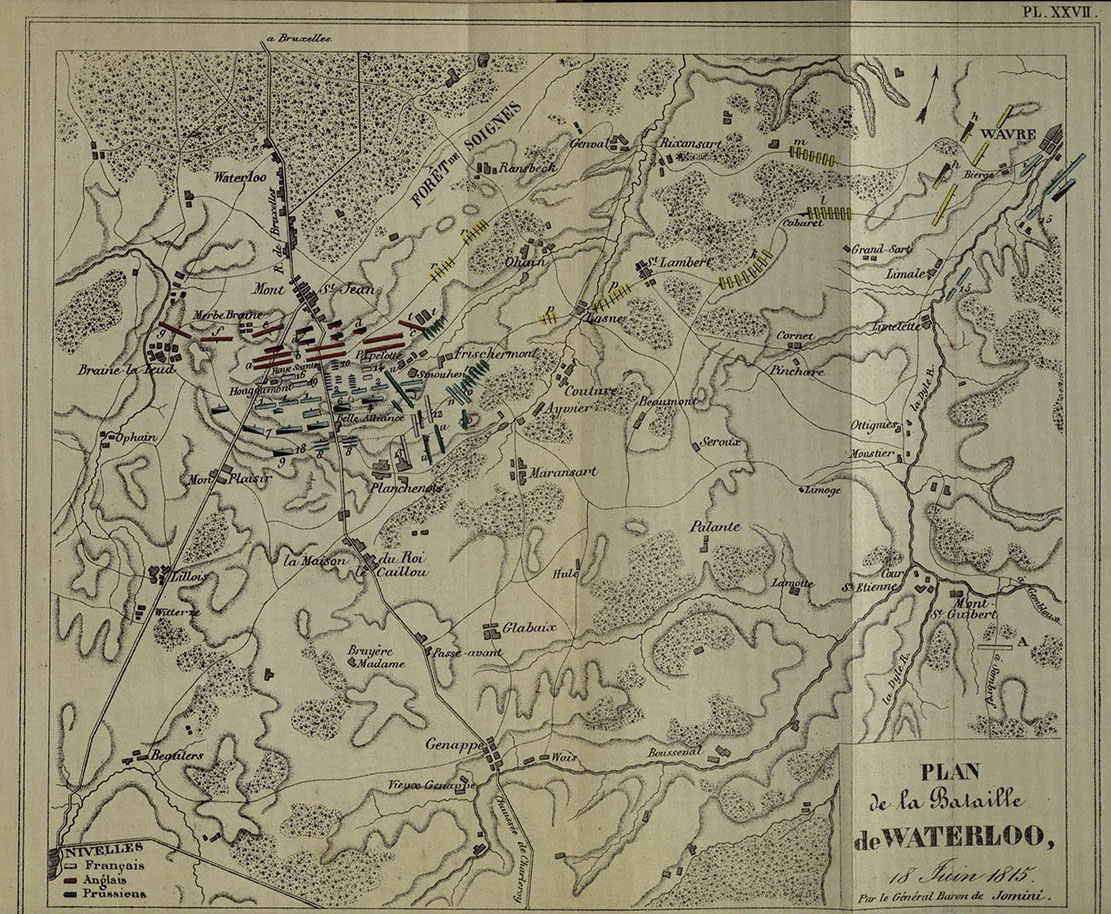
Estimates vary of the numbers who were killed, wounded or missing – perhaps 24,000 allied and 41,000 French. The impact of the battle was huge, on the individuals involved and their families, on communities and nationally and, through the 1815 Congress of Vienna, on the wider face of Europe. The popular appetite for detail about the battle is vividly preserved through the many contemporary accounts. We have chosen images from some of the pamphlets, stories, poems, journals, sermons, reports and analysis which continued to be produced throughout the 1800s and are preserved within our collections.
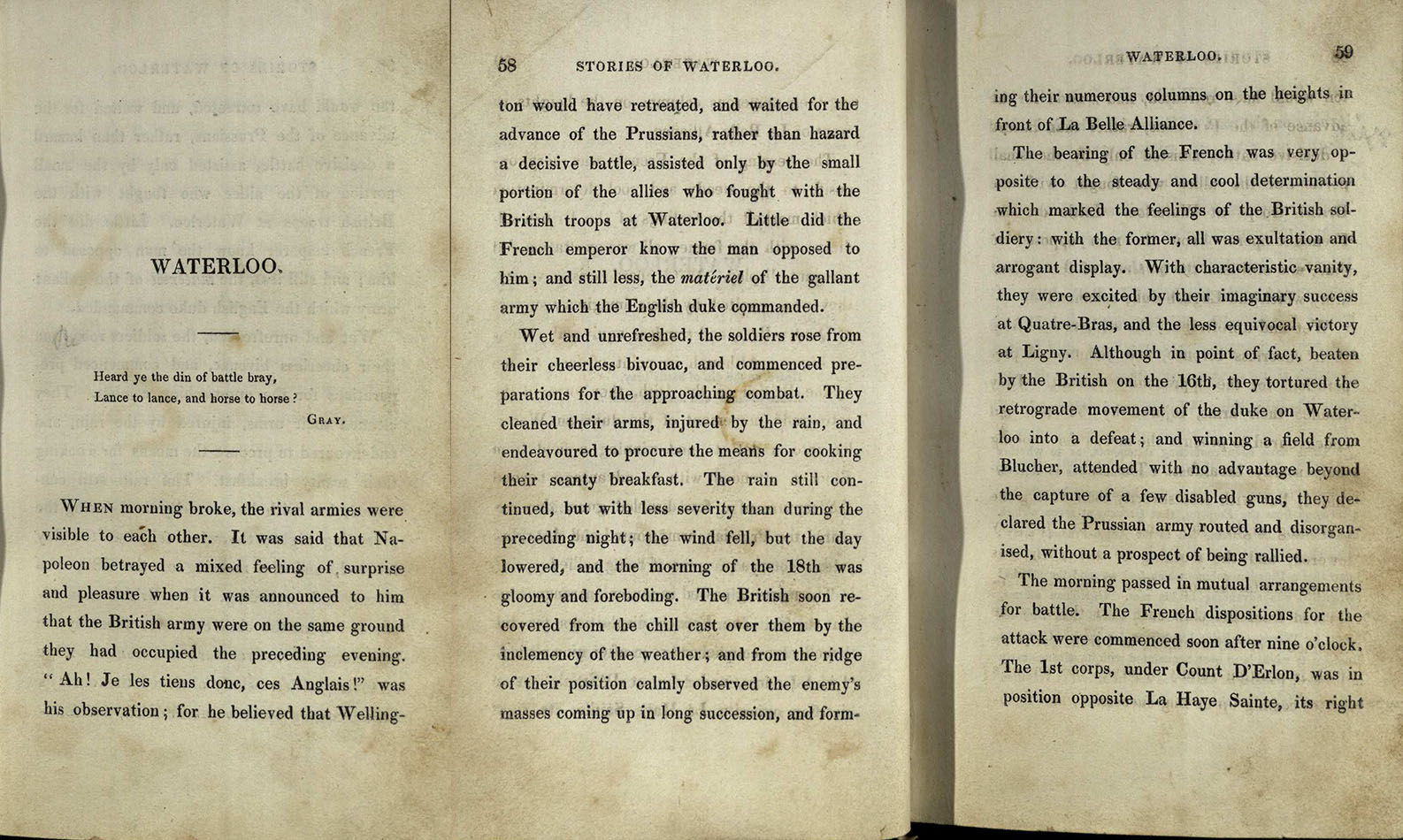
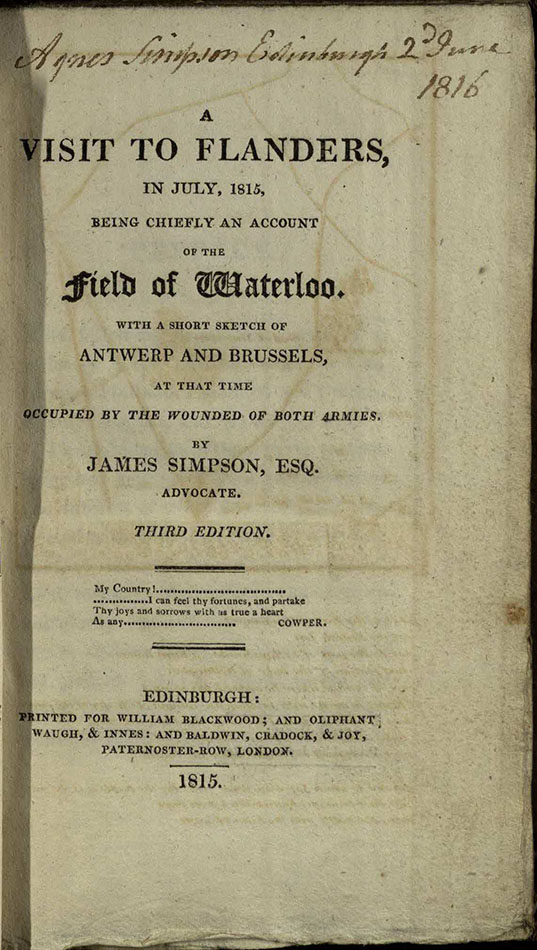
Due to its proximity to Brussels, the battlefield was a tourist destination even before fighting was over. James Simpson’s visit to Flanders in July 1815 includes harrowing accounts of tours he made through the battle site and the hospitals set up to deal with those casualties who could not be moved.
“Something, if possible, beyond the ordinary care for the sick and hurt appeared to me to animate all ranks of medical men, for the wonder of Waterloo; and their zeal made no distinction between their countrymen and their enemies. I accompanied my friends to an hospital of 800 British wounded, which they visited in the evening. Nothing could be better fitted for its purpose. … The scene was now divested of is more horrifying features.”
He met injured soldiers who, ‘however, rejected any exclusive praise on their own account: “They did no more than their duty; and so did every regiment which was there.” He spoke of the patriotism of French soldiers and their enduring commitment to Napoleon, of seeing badly injured and dying men, exhausted priests, and the prison.
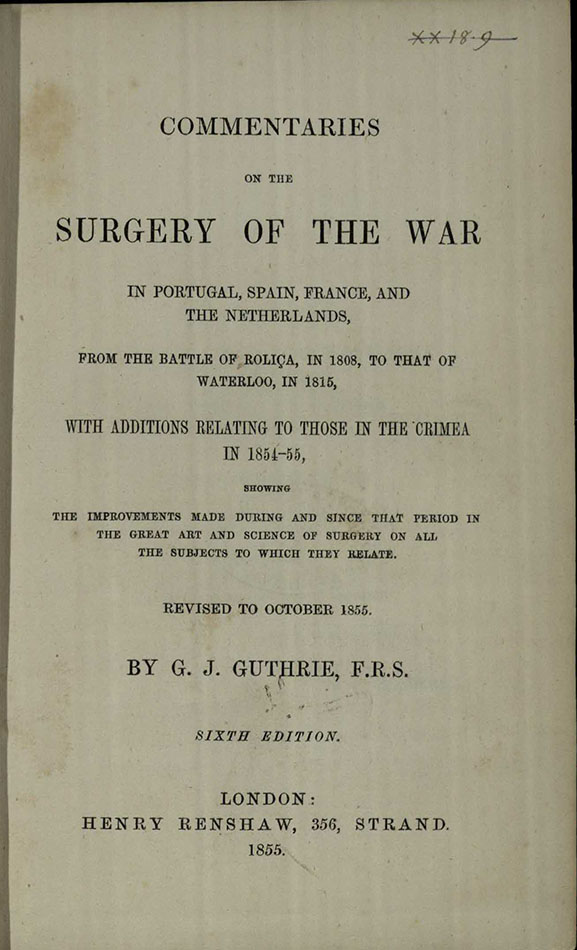
William Guthrie’s profession as a military surgeon gave him a different perspective on the battle. He notes in the preface to his technical manual on military surgery that, at the end of war in 1814, he expressed in print his regret ‘that we had not had another battle in the south of France to enable me to decide two or three points in surgery which were doubtful. I was called an enthusiast and laughed at accordingly. The battle of Waterloo afforded the desired opportunity.’ He went to Belgium in June 1815 as an ‘amateur’ – without an official military or medical position – but the medical officers ‘put themselves and their patients at my entire disposal and carried into effect every suggestion. The doubts on the points alluded to were dissipated and the principles wanting were established. Three of the most important cases which had never before been seen in London nor in Paris, were sent to the York Military Hospital then at Chelsea. … I offered to do the duty of a staff-surgeon without pay, provided two wards were assigned to me in which the worst cases from Brussels and Antwerp might be collected. The offer was accepted and for two years I did this duty, until the hospital was broken up and the men transferred to Chatham.’ During this time Guthrie gave a course of lectures on Military Surgery.
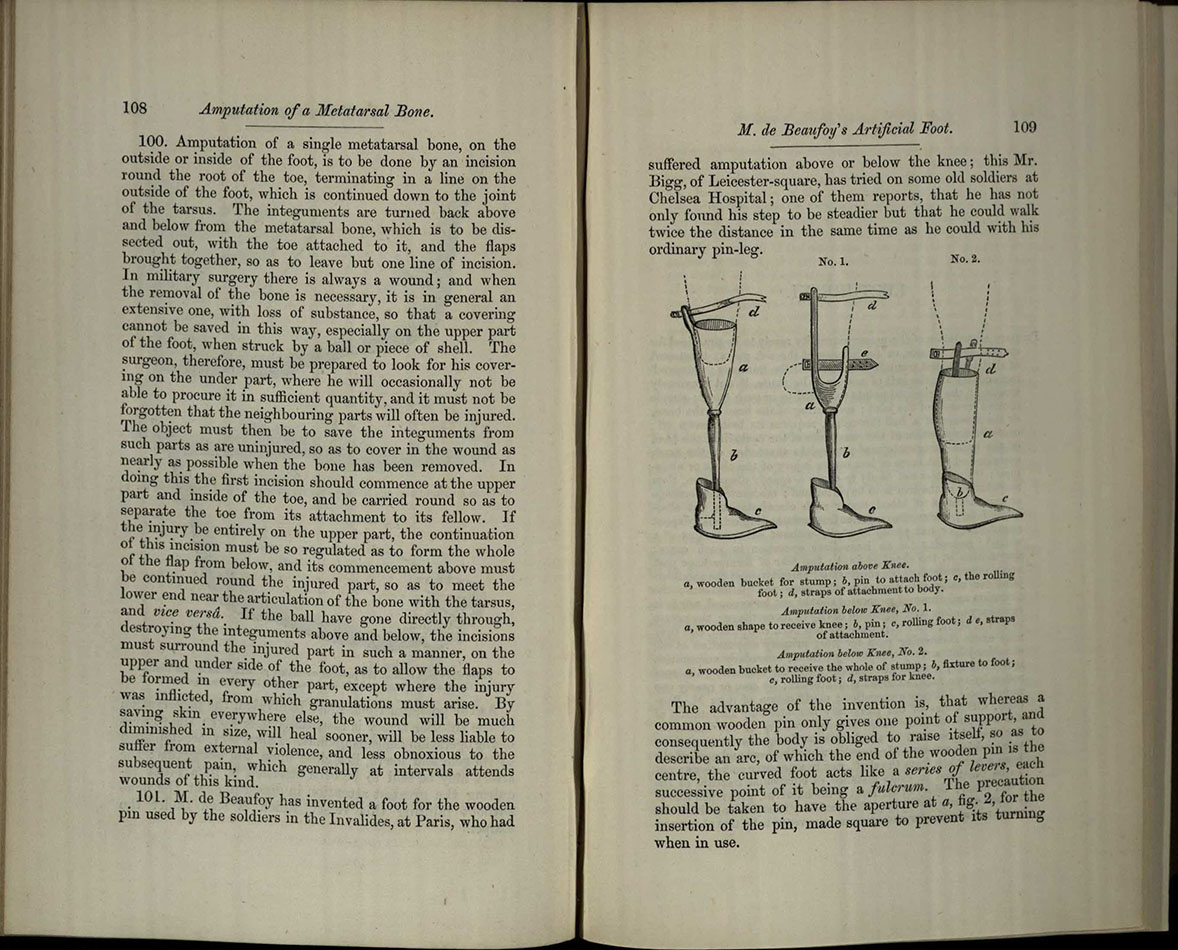
The preface to our 6th edition states that ‘the precepts inculcated in [the manual] have been fully borne out and confirmed by the practice of the Surgeons of the army now in the Crimea in almost every particular.’ So at least there were some lessons learned from the great bloodshed of Waterloo.
“The precepts have been the means of saving the lives, and of relieving, if not even of preventing, the miseries of thousands of our fellow-creatures throughout the civilized world.”
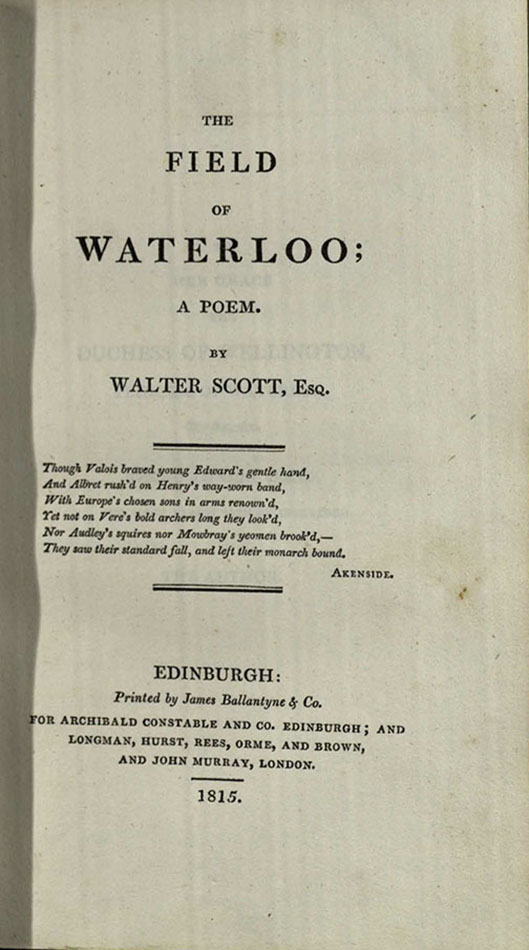
Walter Scott visited within 7 weeks of the battle and wrote a poem in aid of the fund to support the wounded and the families of the dead which was published within 4 months. By 1832 when James David Forbes toured from London to Calais and Brussels, he stopped at Waterloo before continuing to Prussia and south to Switzerland. He comments on the view from the mound raised to commemorate the place where the Prince of Orange was wounded. This was 40 metres high and the soil used to erect it had been dug from the site of the central area of the Allied Line where Wellington’s forces had mounted one of their significant defensive actions. Forbes took metereological measurements from the mound!
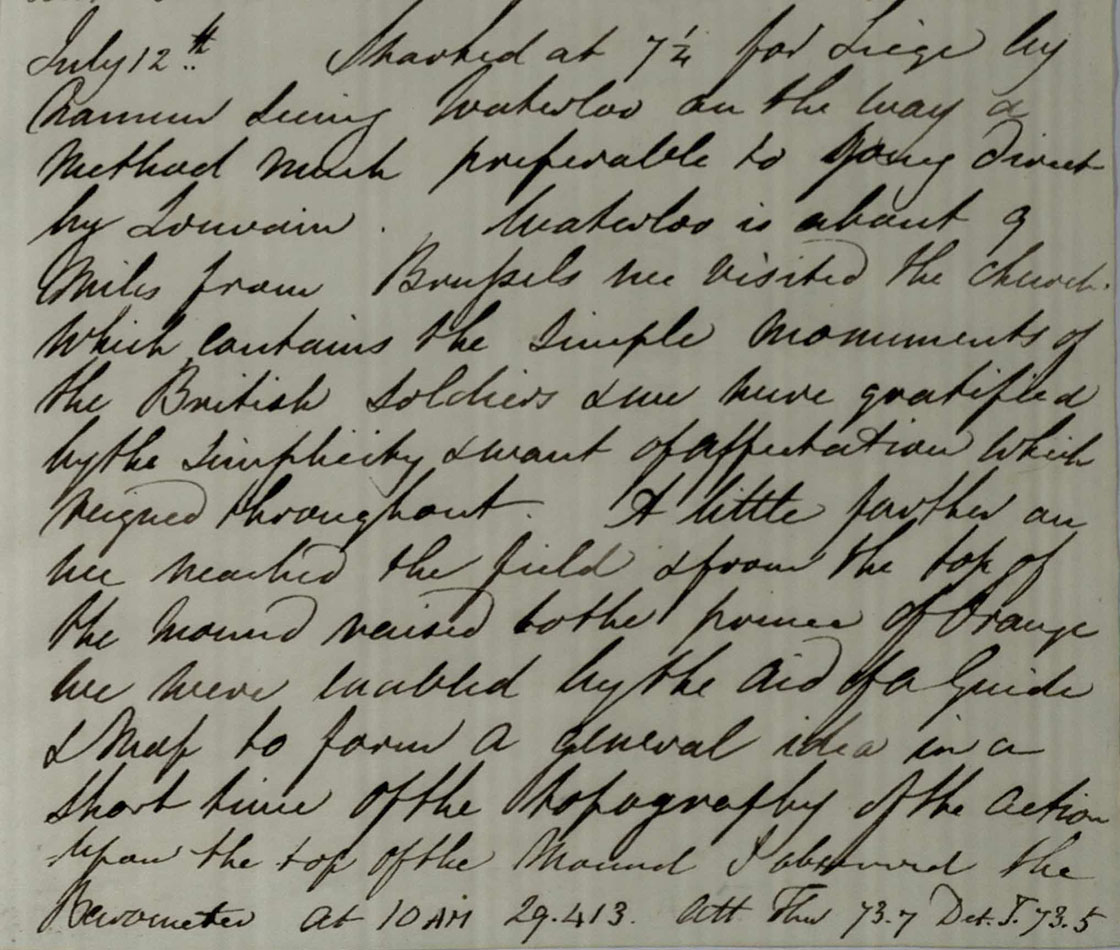
“Started at 7¼ for Liege by
Namur seeing Waterloo on the way a
method much preferable to going direct
by Louvain. Waterloo is about 9
miles from Brussels we visited the church
which contains the simple monuments of
the British soldiers and we were gratified
by the simplicity & want of affectation which
reigned throughout. A little further on
we reached the field & from the top of
the mound raised to the Prince of Orange
we were enabled by the aid of a Guide
& map to form a general idea in a
short time of the topography of the action.”
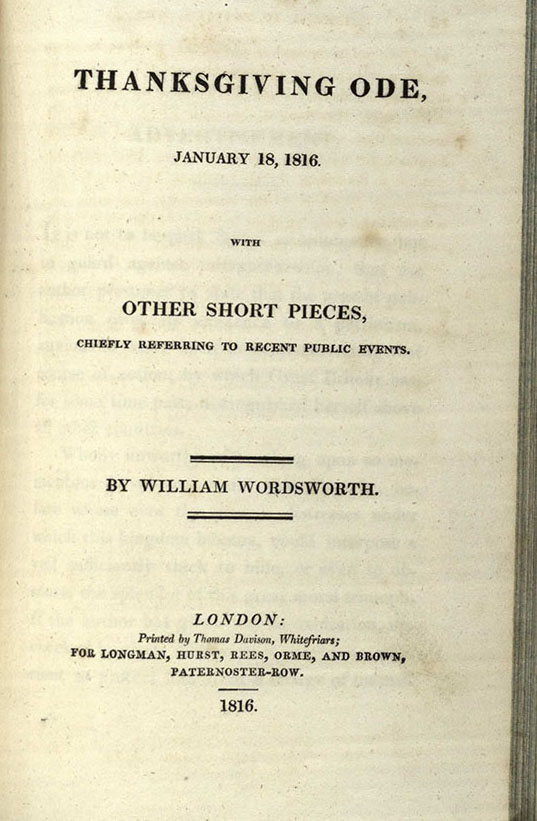
The patriotic poetry and nationalistic verse talks of ‘Wellington the Great’ defeating the ‘Tyrant’, ‘Despot’, ‘The Vile Oppressor’, the ‘detested Corsican’. William Wordsworth joined those writing poetry to commemorate the battle. His Thanksgiving Ode refers to the ‘glistering snake, the bold Arch- despot’. This poem is bound with other short works relating to the battle including a lament, a sermon, a French account of the last campaign and Scott’s poem. The mass popular appeal of the battle has left us with bridges, roads, stations, and hotels in commemoration. Local celebration began as early as 1816 as this order of payment for entertainments for Waterloo Day 1816 reveals.
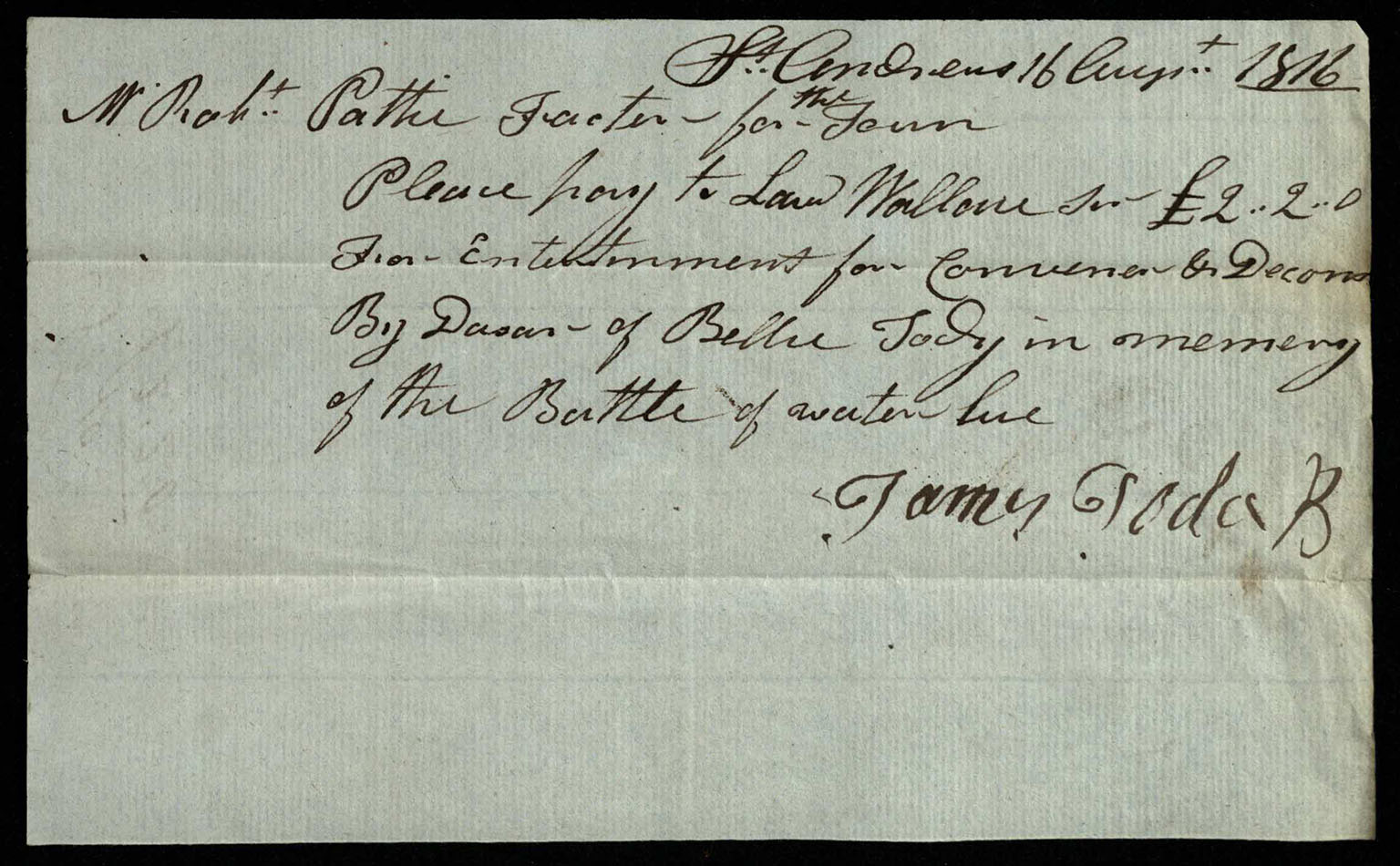
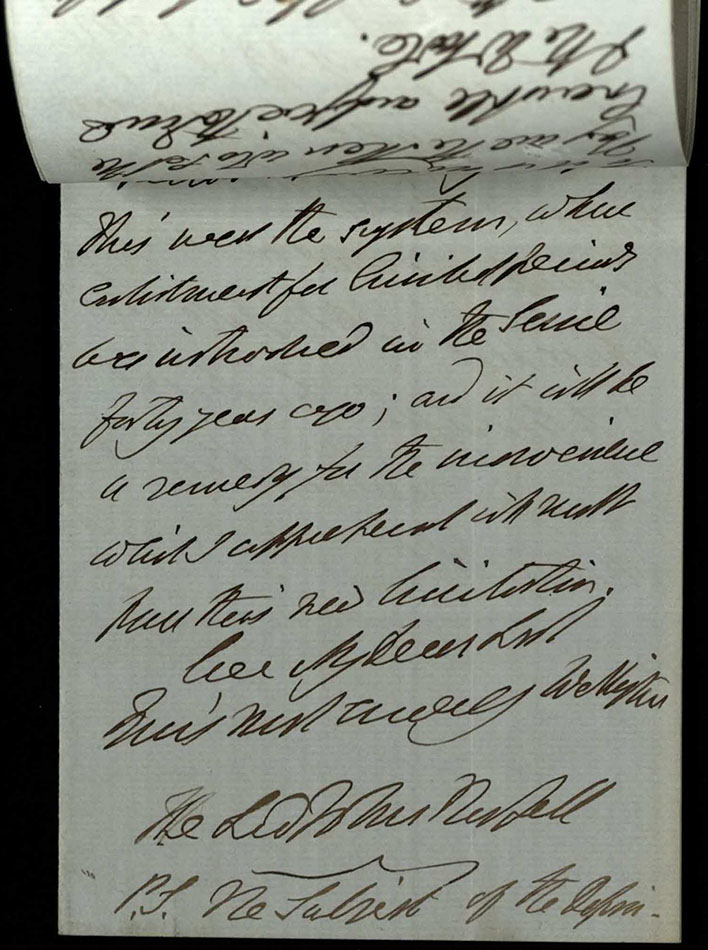
And finally, here’s a letter from Arthur Wellesley, Duke of Wellington, writing to Lord John Russell in 1847 about the discharge of soldiers now in the ranks who have completed 10 years of service. Wellington advocates re-enlistment at the end of the term as was ‘‘introduced in the service forty years ago”. ‘I am, my dear Lord, Yours most sincerely, Wellington’.
There’s a fantastic virtual exhibition on Waterloo at Cambridge University Library and the BBC are running a series of programmes this week.
-RH